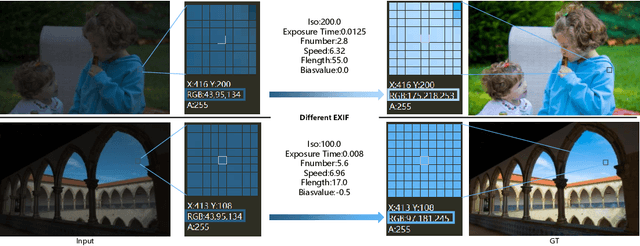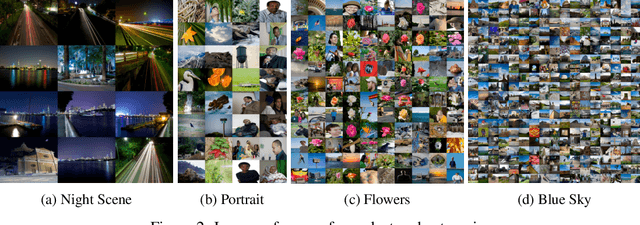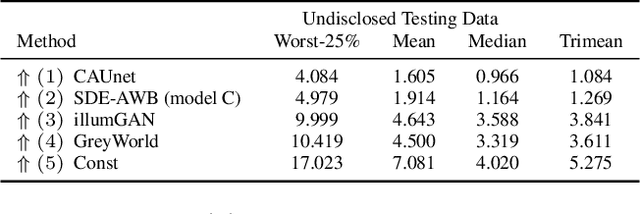Sibo Feng
Cascade Luminance and Chrominance for Image Retouching: More Like Artist
May 31, 2022



Abstract:Photo retouching aims to adjust the luminance, contrast, and saturation of the image to make it more human aesthetically desirable. However, artists' actions in photo retouching are difficult to quantitatively analyze. By investigating their retouching behaviors, we propose a two-stage network that brightens images first and then enriches them in the chrominance plane. Six pieces of useful information from image EXIF are picked as the network's condition input. Additionally, hue palette loss is added to make the image more vibrant. Based on the above three aspects, Luminance-Chrominance Cascading Net(LCCNet) makes the machine learning problem of mimicking artists in photo retouching more reasonable. Experiments show that our method is effective on the benchmark MIT-Adobe FiveK dataset, and achieves state-of-the-art performance for both quantitative and qualitative evaluation.
Point Cloud Color Constancy
Nov 22, 2021



Abstract:In this paper, we present Point Cloud Color Constancy, in short PCCC, an illumination chromaticity estimation algorithm exploiting a point cloud. We leverage the depth information captured by the time-of-flight (ToF) sensor mounted rigidly with the RGB sensor, and form a 6D cloud where each point contains the coordinates and RGB intensities, noted as (x,y,z,r,g,b). PCCC applies the PointNet architecture to the color constancy problem, deriving the illumination vector point-wise and then making a global decision about the global illumination chromaticity. On two popular RGB-D datasets, which we extend with illumination information, as well as on a novel benchmark, PCCC obtains lower error than the state-of-the-art algorithms. Our method is simple and fast, requiring merely 16*16-size input and reaching speed over 500 fps, including the cost of building the point cloud and net inference.
SDE-AWB: a Generic Solution for 2nd International Illumination Estimation Challenge
Oct 11, 2020



Abstract:We propose a neural network-based solution for three different tracks of 2nd International Illumination Estimation Challenge (chromaticity.iitp.ru). Our method is built on pre-trained Squeeze-Net backbone, differential 2D chroma histogram layer and a shallow MLP utilizing Exif information. By combining semantic feature, color feature and Exif metadata, the resulting method -- SDE-AWB -- obtains 1st place in both indoor and two-illuminant tracks and 2nd place in general track.
 Add to Chrome
Add to Chrome Add to Firefox
Add to Firefox Add to Edge
Add to Edge